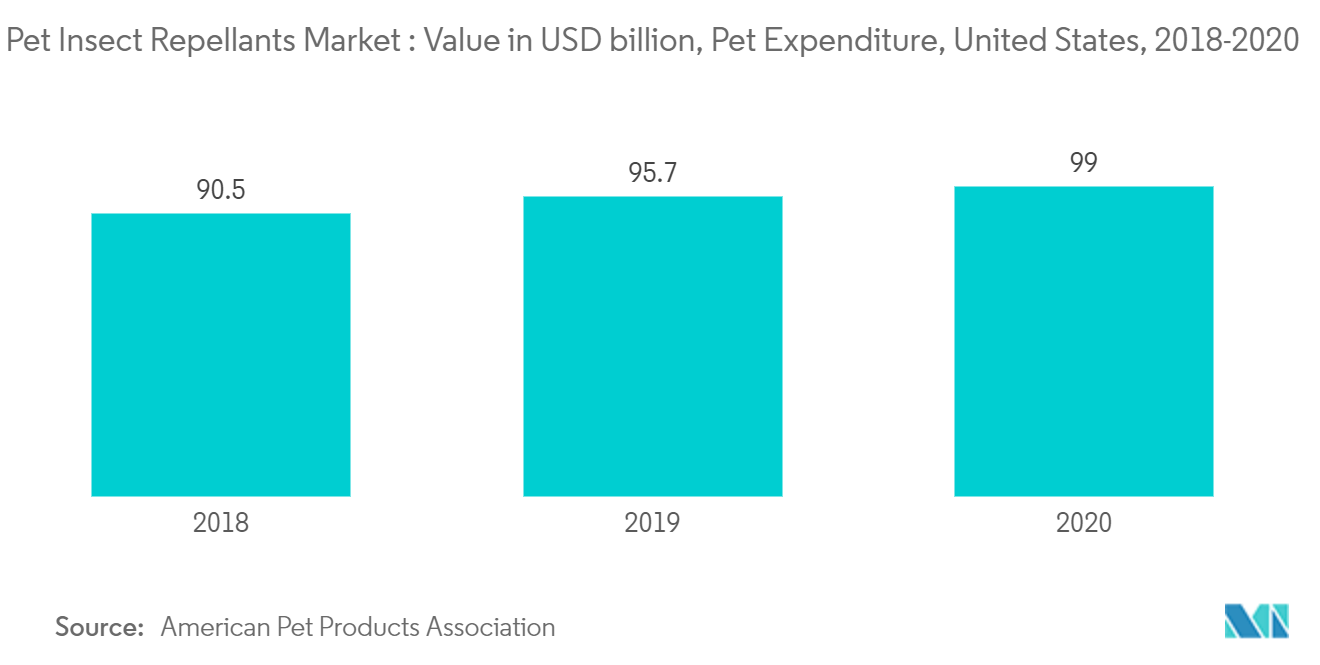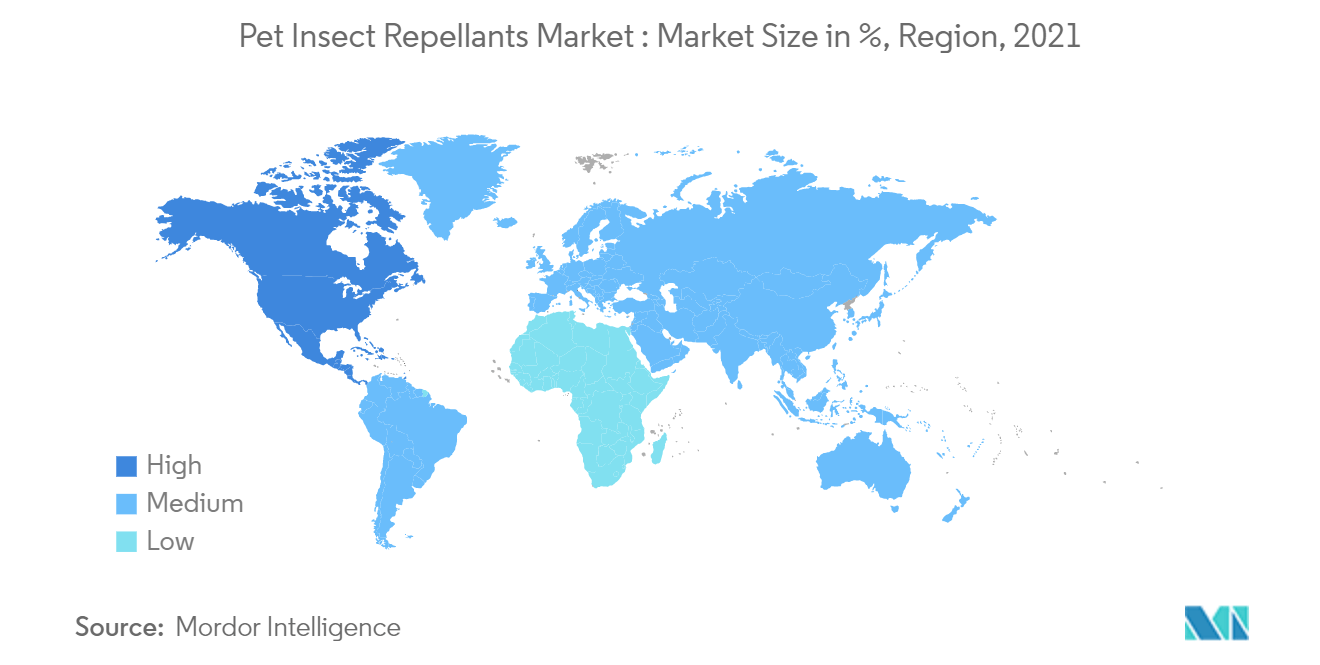Market Trends of Pet Insect Repellants Industry
This section covers the major market trends shaping the Pet Insect Repellants Market according to our research experts:
Increased Focus and Expenditure on Pet Health
The pet insect repellents market is benefiting tremendously, owing to the increasing per capita animal healthcare expenditure. For instance, according to the American Pet Product Association (APPA), Dog owners in the United States spent an average of USD 1,880 per canine in the prior 12 months, which includes pet food, treats, toys, vitamins, grooming, visits to the vet, and dog-walking/kennel services. Cat owners, during the same time frame, spent an average of US 902 per feline. Among all, Vet bills are typically the costliest segment of the budget to own a pet, and lack of access can be prohibitive to pet ownership for many people.
Furthermore, in the past ten years, American pet spending has more than doubled. For instance, in 2010, the total money spent on pets was roughly USD 45.53 billion. Within the next decade, this spending has mushroomed to USD 103.6 billion annually. The biggest annual increase was between 2017 and 2018, when spending quickly jumped from USD 69.51 billion to USD 90.5 billion, a growth of 30%.
Similarly, in Canada, according to Ontario Veterinary Medical Association (OVMA), the annual cost of caring for a puppy was CAD 3,242. According to the Centers for Disease Control and Prevention, during the 13 years, from 2004 to 2016, seven new germs spreading through the bite of an infected tick were discovered in the United States alone. These germs can also infect people, alongside dogs, and cause zoonotic diseases. As the prevalence of various diseases in companion animals is increasing, the demand for diagnostic imaging procedures and supplements to prevent diseases is rising across the country.

North America Leads the Market
North America is the major market for pet insect repellants occupying about 43.5% share of the total market in 2021. The United States stands first in the overall pet population globally. According to the 2021-2022 APPA National Pet Owners Survey, 70% of US households own some pet, an increase from 67% in the 2019-2020 survey. In fact, 14% of total respondents obtained a new pet during the pandemic. Moreover, pet spending increased during the past year in the country, with 35% of pet owners spending more on their pet/pet supplies, including food, wellness-related products, and other pet care items, including insect repellants which are anticipated to drive the market in the country.
The insect attack incidences on pets in the country, for instance, in 2020, an aggressive swarm of bees fatally attacked three dogs in Arizona, will lead to an increase in demand for insect repellants to protect and ensure the well-being of the pets.
Further, in Canada, many products on the market claim to protect against insect bites. Only those that have been government-approved for their safety and effectiveness are allowed for use in the country. In Canada, the West Nile virus and Lyme disease are health concerns for pets. Medically formulated insect repellents are widespread in the country. For instance, Mozi-Q, a homeopathic formulation made by Xerion Dispensary, a manufacturing company based in Calgary, Alberta, has brought insect repellent made in Canada to the market that provides safe and natural solutions to everyday concerns in pets. Thus, increasing pet ownership and the spread of insect-transmitted diseases among pets are anticipated to drive the demand for pet insect repellants in t during the forecast period.


